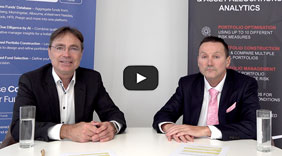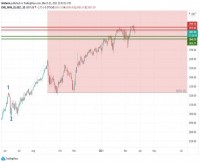|
Bubbles, Bears and Busts The following column is by Thomas E. Holmes, president of Genesis Futures Corporation. Genesis Futures’ NT4 is a diversified, systematic, trend-following program. Mr. Holmes started Genesis in 1984 and operated it through 1988. Then he took a long hiatus from the commodity trading advisor business, worked at Adobe Systems and Visio Corporation and in real estate. He restarted his CTA in 2008. Earlier in his career he co-founded Heritage Commodity Consultants, a
CTA-CPO. Before that, he was in the US Marine Corps and the Navy. The common wisdom of portfolio protection, in stock and other markets, has been built on the premise that diversification is the front line of defense. However, we seem to forget that the words “front line” mean the beginning, not the end goal of protecting our assets. Diversification will give some protection during slight or even moderate market perturbations. When a real disaster hits, supposedly diversified investments are subject to similar losses as concentrated positions because our portfolio constructs do not include sufficient non-correlating assets. In other words, in major sell-offs, everything moves together, albeit at varying rates. Losing less than market averages is not a comforting factor when your portfolio is down 30% to 50%. What do we mean by “non-correlating” assets when it comes to offsetting losses? Simply put, we must enhance diversification by including a strategy that promotes a profit opportunity to offset losses during market dislocations. Numerous studies over the last thirty years have demonstrated that adding a portion of non-correlating assets – managed futures – to traditional stock and bond portfolios reduces losses and portfolio volatility. What has caught our attention is that during almost every dislocation, especially the major stock market declines (1987 and 2008), systematic, trend-following systems garnered returns that could have made a significant and positive impact on portfolio performance. In 2008, BarclayHedge’s Systematic Index, a weighted average of some 448 CTA’s, rose 18.6% while the S&P500 declined precipitously (-38.5%). Genesis Futures’ NT4 system adheres to this paradigm. Layering Here’s another aspect of diversification. No all trend following systems are
created equal. You can get greater diversification by taking into account the
style, trade duration, time framework and return profile of an advisor. In
addition to a horizontal (futures) component you should also add verticality to
each segment within this component. Layering helps identify your own style of investing and brings a framework to the process that meets your individual needs. A suggested process might include as the first step identifying the style of trading with regards to the futures spectrum that the advisor uses to execute their program. This could be a single futures contract or sector contracts in domestic or international markets. Secondly, determine the duration of trades – frequent, mid- or long-term – as well as concentration. Is there a consistent pattern of timing of trades or are they random? The last step identifies risk/return profiles that are appropriate for your risk tolerance and commensurate with a return that fits your diversification needs. Do you want a targeted or absolute return? While this is not an exhaustive approach, it helps stimulate thinking beyond top-line diversification. Absolute returns Regarding the question of whether targeted returns or absolute returns work
better, I have a succinct view. In my opinion, targeted returns are not
appropriate during major market dislocations. Historically, they have not been
of the magnitude to significantly offset stock and bond market crashes. This is
due to finite return expectations. Genesis Futures’ options approach buys calls when a market is going up and buys puts when a market is going down. Thus, all sides of the market are traded when an appropriate trend is indicated. The efficacy of a buy-only options strategy is to have a fixed risk at all times. One can only lose the amount paid for the option, plus fees or commissions. Thus we know what our risk is at all times. Naturally, if the position is
profitable there will be more give back than the original position. This led to
profit taking stops as part of our layering strategy, enhancing our ability to
take money out of the market and keep the portfolio within a predetermined risk
profile while continuing with the trend. |
|
This article was published in Opalesque Futures Intelligence.
|





 RSS
RSS










